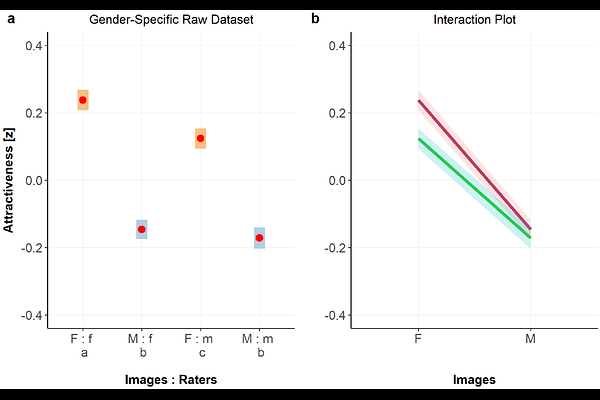The Gender Attractiveness Gap

The Gender Attractiveness Gap
Wassiliwizky, E.; Zietsch, B. P.; Ullen, F.
AbstractWriters from Darwin to Dawkins have noted that, in humans, women are considered the \"beautiful sex,\" whereas in most species, it is the males who display more elaborate and visually striking traits. This reversal of typical sex roles is a peculiarity of the human species and has been the focus of extensive theoretical debate. Yet, it has never been systematically examined or empirically verified. Here, we present a comprehensive cross-cultural meta-analysis of same-sex and opposite-sex ratings of facial attractiveness from around the globe. Our findings confirm the existence of a robust \"Gender Attractiveness Gap\" (GAP), with female faces rated significantly more attractive than male faces across rater genders, cultural backgrounds, and portrayed ethnicities. Notably, the effect is more pronounced among female than male raters, suggesting gender-specific modulation. We show that approximately two-thirds of the GAP is mediated by structural facial sex-typicality. However, this mediation is asymmetric: controlling for facial dimorphism substantially reduces the attractiveness of female, but not male, faces, indicating a specific aesthetic preference for structural femininity by both male and female raters. This suggests that attractiveness judgments are driven by general aesthetic evaluation processes that extend beyond heterosexual mate choice. We also observe a general tendency for greater stringency among male raters. Overall, these findings contribute to evolutionary psychology and social perception, offering new insights into mate selection theories and underscoring the importance of accounting for gender-specific and cultural influences in attractiveness judgments.